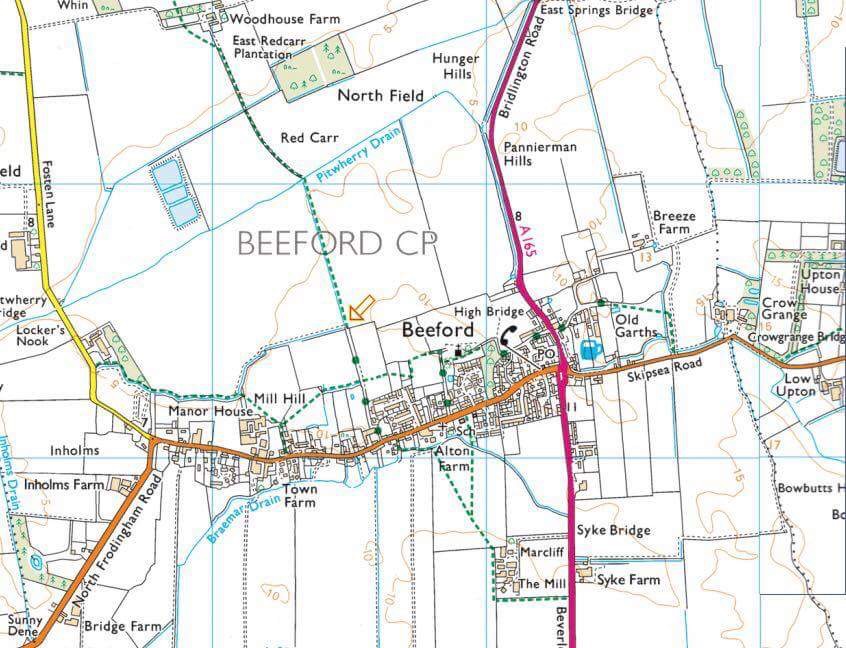THE HISTORY OF BEEFORD
The large, irregularly-shaped parish of Beeford comprises the village, which is 10km East South East of Driffield and 5km west of the coast at Skipsea, the hamlet of Dunnington, some 3km south-east of the village, and that of Lissett, 4 km north-north-east of Beeford.
Beeford is a large village with many of its residents working in nearby towns but the other settlements are very small. The name is Anglican, Beeford alluding to the proximity of a ford. In 1743 there were said to be 76 families in the parish which increased to 80 families in1764. From 378 in1801 the population of Beeford township rose sharply in the earlier 19th century. By 1971 the village had 639 inhabitants and in 1991 there were 874 residents.
The parish drains westwards into the valley of the river Hull and eastwards to the North Sea. Side lanes leading north to Lissett and south to Brandesburton from the east end of Beeford village later became part of the main Bridlington to Beverley and Hull road. The main road was straightened and diverted away from Lissett hamlet in1925 and further improved in 1970. The road was carried over Barmston Main drain on the Lissett-Beeford boundary by Lissett bridge.
In the mid and late 20th century many new houses were built in gaps in the village street and in small estates behind it, and many of the older houses were remodelled. There was also development alongside the main road, where the new houses included a dozen built by Driffield rural district council. A telephone exchange had been added by 1956 and sewerage pumping stations for the new houses were built around 1960. The older buildings of the largely brick-built village date from 18th and 19th centuries.
There were up to four ale houses at Beeford in the later 18th century. In 1823 the Ship, the Tiger and the Black Swan were named. and in 1840s there were besides three unnamed beerhouses. The Ship was closed in 1937 and the house demolished in 1996. The Black Swan was rebuilt in the earlier 20th century and was renamed the Yorkshire Rose in 1996 when the Tiger also standing beside the main road still traded. A former school building at Beeford was bought in 1884 by Catherine Blanch Trevor, the rectors daughter, for a hall and reading room associated with the Church of England Temperance Society. This building later became St :Leonard's Church Rooms. The village had a cricket club in 1931 and playing fields including areas for bowls and tennis and a children's playground were later provided. Beeford Community Centre, built on the other side of the street, was opened in 1989.
A field of 17 a had been divided into 68 allotment gardens for labourers by 1867 and by the 1890's the Pricketts, the chief landowners, had extended the scheme setting aside pasture and arable land for letting.
